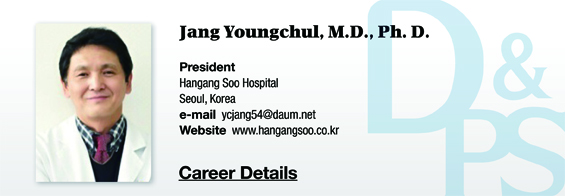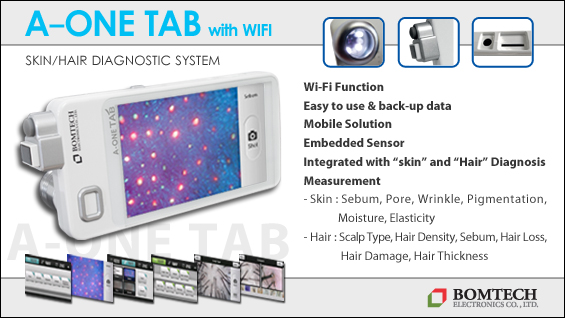Recent continuous development of dressing materials have led to the interest in biologic dressing and its development. The results so far have been remarkable in terms of effectiveness, and it is expected to play an important role in wound healing. Before learning about recent advances in dressing materials, it would be necessary to understand the wound healing process first, which will be discussed briefly in this chapter.
Wound healing refers to the process of tissue repair, which involves tissue response to external damage. Tissue repair entails cell proliferation, cell migration to the damaged tissue, and then matrix maturation after the aggregated cells have completed the repair. This chain of events is parallel to the process of prenatal development of human body in the mother’s womb, the process which reappears after birth only when there is unwanted event such as injury or proliferation of cancer cells. Having complete understanding and control over these cellular changes means the ability to control human life, which is a desire of humankind and the final goal of medicine. Therefore, the study of wound healing process is the common task of all areas of medical research and should be recognized as the most important basic knowledge for every medical professional (Figure 1).

Figure 1. What is wound healing?
Upon sustaining tissue damage, human body undergoes the following process of biologic events:
Hemostasis starts first, followed by inflammatory response, and then connective tissues are formed. The wound tissue is covered by epithelium and then matures by wound remodeling. Therefore, wound healing can be divided into 3 phases, which are 1) inflammation, 2) fibroplasia, and then 3) maturation. These phases are controlled and modified by growth factors, which are made of biologically active proteins, or various cytokines (Figure 2).
[Advertisement] A-One Tab with Wi-Fi(Skin/Hair Diagnostic System) – Manufacturer: BOMTECH(www.bomtech.net)
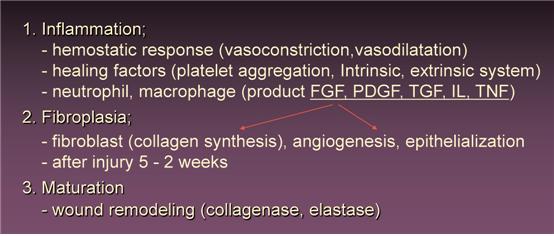
Figure 2. Phases of wound healing
These processes are often described by more subdivided phases, because they are intertwined to each other in a very complex way (Figure 3).
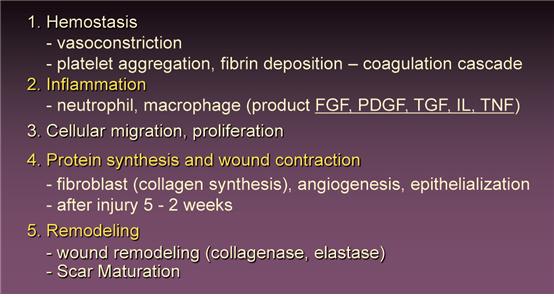
Figure 3. The phases of wound healing are overlapping
Growth factors are a type of polypeptide that controls cellular growth, differentiation and metabolism, and are hormone-like molecules which interacts with specific cell surface receptors that controls the process of tissue repair. They are present in the level of nanograms but play an important role in wound healing and tissue repair (Figure 4).

Figure 4. Growth factors?
In the early phase of wound healing, or inflammatory response phase, hemostasis response induces vasoconstriction to prevent continuous bleeding, and the collagens inside the blood vessel wall of the damaged tissue are exposed to platelets. Thromboxane and serotonin are released to stimulate vasoconstriction and to maintain the active materials inside the wound. On the other part of the wound has vasodilatation to release other healing factors into the wound. The vasodilatation is modified by histamine produced by mast cells and basophils. Vascular permeability is also enhanced to allow the healing factors to reach the wound (Figure 5).
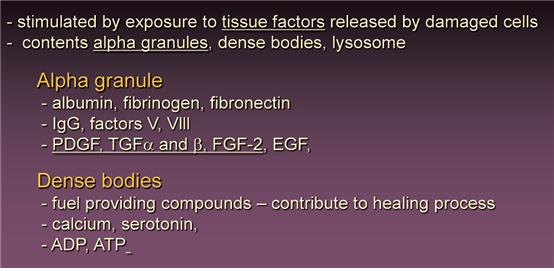
Figure 5. Inflammation
The activated platelet aggregation triggers clotting cascade, which involves both intrinsic and extrinsic system. The intrinsic system is activated when collagen is exposed to factor VII, also known as Hageman factor. In the presence of high molecular weight kininogen, a precursor of bradykinin and prekallikrein, factor VII activates factor XI, factor IX and factor VIII, in that order. The extrinsic system is activated by thromboplastin, which is produced by phospholipid and glycoprotein released when the damaged tissue is exposed to circulating blood. Both systems go through the final common pathway and leads to fibrin and fibrin polymerization. Alpha granules inside the platelet contains various cytokines, which help wound healing by stimulating the surrounding cells or acting directly on the cells (Figure 6).
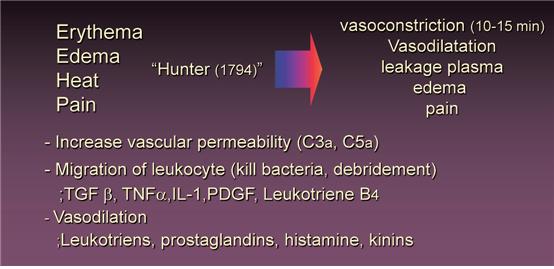
Figure 6. Platelet aggregation
- To be continued -
▶ Previous Artlcle : #5. Advanced Dressing Materials
▶ Next Artlcle : #7. Overview of Wound Healing Ⅱ













